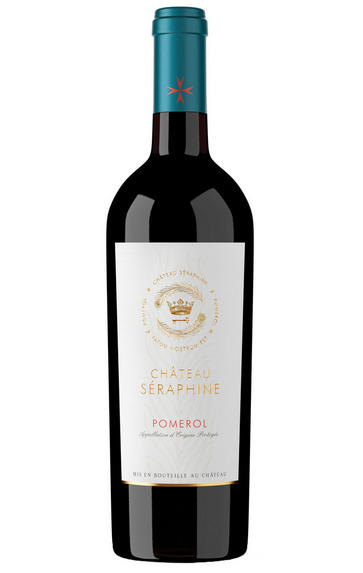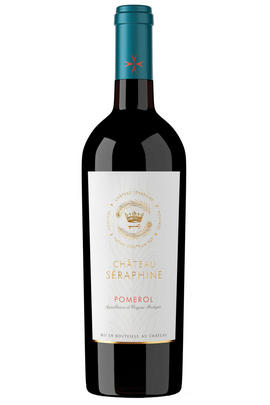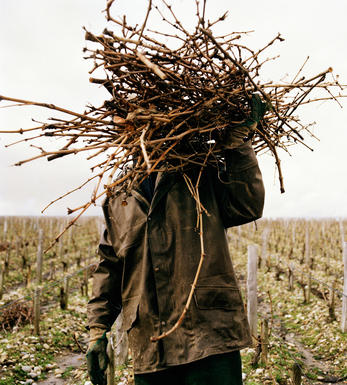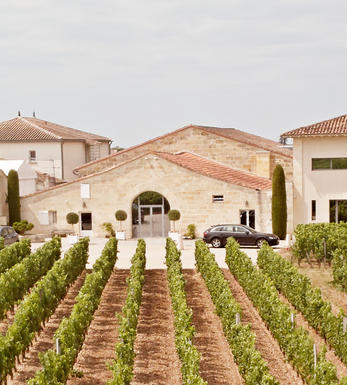
2022 Château Séraphine, Pomerol, Bordeaux

Critics reviews
The 2022 Séraphine, the 6th vintage under proprietor Martin Krajewski, was picked from 1 to 23 September at 30hL/ha (for the older vines pruned single Guyot), matured in 50% new oak, and one 1,000-liter clay amphora.
This leans toward black fruit on the nose, blackberry and bilberry, and touches of incense and terracotta. Nicely defined and quite understated at first. Maybe it needs just a touch more vigour, but that should develop.
The palate is medium-bodied with svelte tannins, harmonious, and nicely detailed with just the right spiciness. Quite vivid toward the finish, gentle grip with a dash of white pepper on the aftertaste. 4,000 bottles were produced.
Drink 2029 - 2045
Neal Martin, Vinous.com (April 2023)
There has been extensive replanting across the Séraphine vineyard as it constructs an exceptionally impressive new estate, but this leaves it vulnerable to the heat of the year. It successfully steers through many complications, delivering inky depths and a velvety texture to the fruit, but it contracts through the mid-palate as the black fruit and spice notes close in.
Attractive curls of woodsmoke, old books, tobacco, and cigar box on the finish have charm and pleasure and show careful extraction. The 6th vintage under Martin Krajewski, with daughter Charlotte winemaker. This year, around 50% first wine, the first time to have Cabernet Franc in the blend.
Aged in 300l barrels, 30hl/h yield, harvested entirely within September. 40% new oak.
Drink 2026 - 2042
Jane Anson, JaneAnson.com (May 2023)
95% Merlot, 5% Cabernet Franc. Cask sample.
A little shy on the nose but has dark and red fruit as it opens. Plush fruit and well-integrated tannins provide a refined texture. Some persistence but nothing overblown. Should improve.
Drink 2027 - 2035
James Lawther MW, JancisRobinson.com (May 2023)
Really perfumed and scented; violets, roses and iris floral aromas with sweet cherries and chalky strawberries. Fresh but concentrated, still elegant and representative of Pomerol, lush and round but with sharp acidity, bright and lively mouthwatering freshness and bite before the tannic impression comes forward, slowing growing and expanding in the mouth.
There’s a sense of precision, but there’s also weight, density, and concentration with touches of oak, mocha, espresso, dark chocolate, and toast. Grip, tension and density should soften over ageing. Lovely promise. Ageing 12-14 months in 300l barrels, 50% new oak (the largest quantity used on this wine) and a small amount in 7hl amphora. The first vintage to have Cabernet Franc in the blend at 5%.
Harvest started on 1 September.
Drink 2029 - 2045
Georgina Hindle, Decanter.com (April 2023)
About this WINE

Chateau Seraphine

Pomerol
Pomerol is the smallest of Bordeaux's major appellations, with about 150 producers and approximately 740 hectares of vineyards. It is home to many bijou domaines, many of which produce little more than 1,000 cases per annum.
Both the topography and architecture of the region is unremarkable, but the style of the wines is most individual. The finest vineyards are planted on a seam of rich clay which extends across the gently-elevated plateau of Pomerol, which runs from the north-eastern boundary of St Emilion. On the sides of the plateau, the soil becomes sandier and the wines lighter.
There is one satellite region to the immediate north, Lalande-de-Pomerol whose wines are stylistically very similar, if sometimes lacking the finesse of its neighbour. There has never been a classification of Pomerol wines.
Recommended Châteaux : Ch. Pétrus, Vieux Ch. Certan, Le Pin, Ch. L’Eglise-Clinet, Ch. La Conseillante, Ch. L’Evangile, Ch. Lafleur, Trotanoy, Ch. Nenin, Ch. Beauregard, Ch. Feytit-Clinet, Le Gay.

Merlot
The most widely planted grape in Bordeaux and a grape that has been on a relentless expansion drive throughout the world in the last decade. Merlot is adaptable to most soils and is relatively simple to cultivate. It is a vigorous naturally high yielding grape that requires savage pruning - over-cropped Merlot-based wines are dilute and bland. It is also vital to pick at optimum ripeness as Merlot can quickly lose its varietal characteristics if harvested overripe.
In St.Emilion and Pomerol it withstands the moist clay rich soils far better than Cabernet grapes, and at it best produces opulently rich, plummy clarets with succulent fruitcake-like nuances. Le Pin, Pétrus and Clinet are examples of hedonistically rich Merlot wines at their very best. It also plays a key supporting role in filling out the middle palate of the Cabernet-dominated wines of the Médoc and Graves.
Merlot is now grown in virtually all wine growing countries and is particularly successful in California, Chile and Northern Italy.


Buying options
Add to wishlist
Description
Blend: 95% Merlot; 5% Cabernet Franc.
This property is still under most people’s radar but is worthy of more limelight. Not that there will be much to offer once it does break through: there are only 2.2 hectares of vines. It was created in 2016 by Martin Krajewski from two parcels, both with sandy gravel and one with some blue clay.
All the facilities are new. Martin’s daughter Charlotte is the winemaker. The estate has lots of young vines, but the wine doesn’t show too much stress from the dry summer. The nose has creamy notes, and the palate is full and succulent. This is still early days, but there is a lot of promise here.
Drink 2026 - 2038
Score: 17/20
Berry Bros. & Rudd (June 2023)
wine at a glance
Delivery and quality guarantee